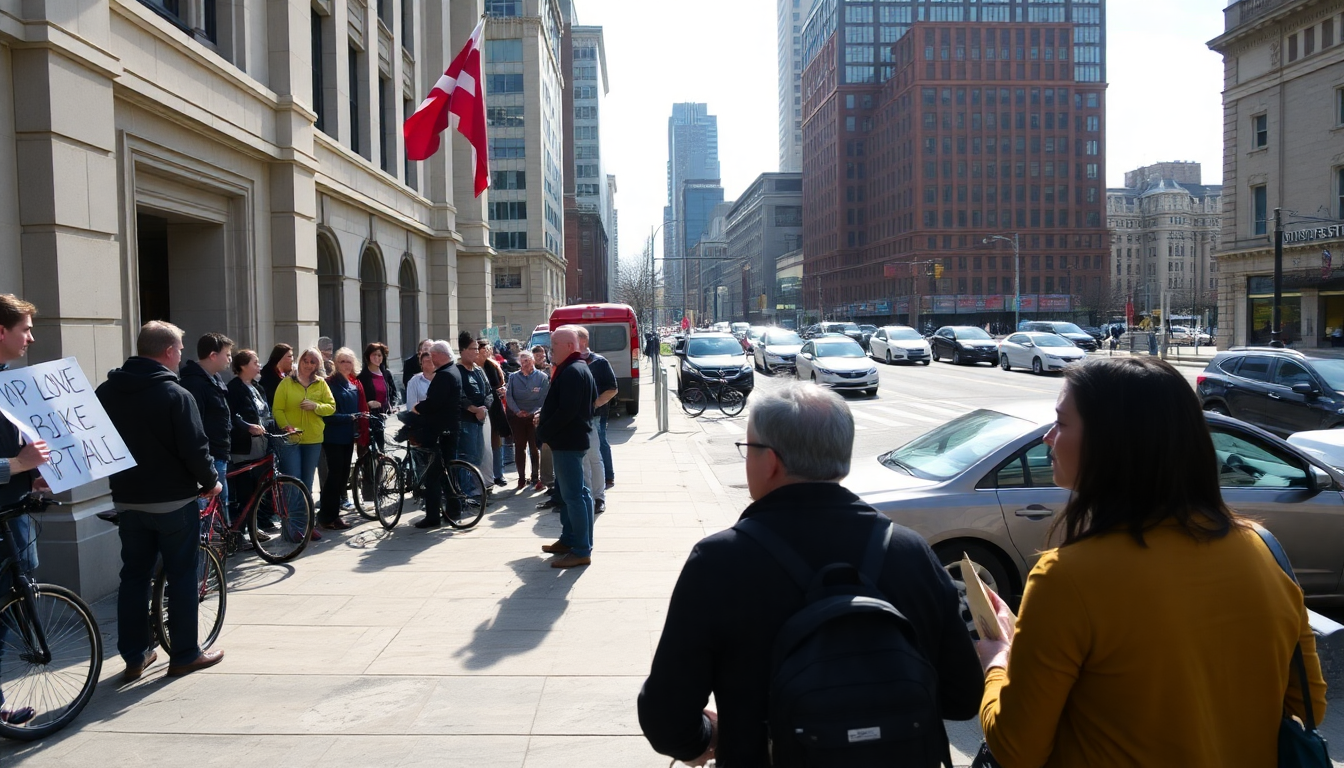Table of Contents
The Halifax Regional Council has just made a notable decision regarding a proposed bike lane on Morris Street, and it’s been quite the journey. After an intense two-hour debate, they ultimately decided against transforming Morris Street into a one-way road to make room for that bike lane. So, what led to this change? Well, it seems that Nova Scotia’s Premier, Tim Houston, wasn’t shy about stepping in, warning the council that his government would intervene if they didn’t rethink their original plan.
The Council’s Decision: A Response to Provincial Pressure
Mayor Andy Fillmore clarified that this shift wasn’t an admission of error but rather a smart move in light of new concerns. The final vote was 11 to 5 against the original plan, sending a clear message that the council members were prioritizing public safety and managing traffic effectively.
On July 16, Premier Houston sent a letter to the mayor and councilors, placing a deadline of August 6 for them to reconsider their approved plans for Morris Street. He argued that introducing a bike lane would likely lead to increased traffic congestion, not to mention safety risks, all while potentially disrupting activities at the nearby port. That’s a lot to consider!
In his letter, Houston pointed to legislation (Bill 24) that gives the provincial government the power to set transportation policies for municipalities. His message was straightforward: if the council went ahead with their plans for Morris Street, there would be consequences from the provincial government.
Internal Council Dynamics and Stakeholder Consultations
The council’s discussions showed a range of opinions. Councillor Sam Austin likened the situation to a “political circus,” but he acknowledged that fresh information warranted a second look. He expressed a desire to avoid a permanent written order that could complicate future decisions—a fair point, don’t you think?
On the flip side, Councillor Becky Kent stood firm, refusing to be swayed by the premier’s intervention. Meanwhile, Councillor Jean St-Amand emphasized the importance of maintaining a positive relationship with the provincial government, expressing concern that this issue could sour future collaborations. It’s clear that navigating these relationships is no small feat!
After the vote, Mayor Fillmore reflected on the evolving dynamics with his fellow council members, hinting at the need for more teamwork in the future. Collaboration seems key as they tackle these complex issues.
Next Steps: Revisiting the Bike Lane Proposal
In light of the council’s decision, an amendment was passed to revisit the bike lane proposal, aiming to engage stakeholders for further consultation. This means they might consider reinstating the original plan but with updated information that addresses the concerns raised during the debate.
Now, the council faces the challenge of balancing the interests of cyclists, motorists, and the broader community. How will they manage this delicate situation? The road ahead will require thoughtful consideration of public input, traffic dynamics, and safety measures to ensure that any future proposals are practical and beneficial for everyone involved.
In summary, the Halifax Regional Council’s recent vote to tweak its bike lane plan highlights the intricate dance between municipal decisions and provincial oversight. The next few weeks will be pivotal as council members engage with stakeholders to explore viable options that meet the community’s needs while also weighing the potential implications of their choices. It’s a classic case of local governance at work—stay tuned to see how it unfolds!


